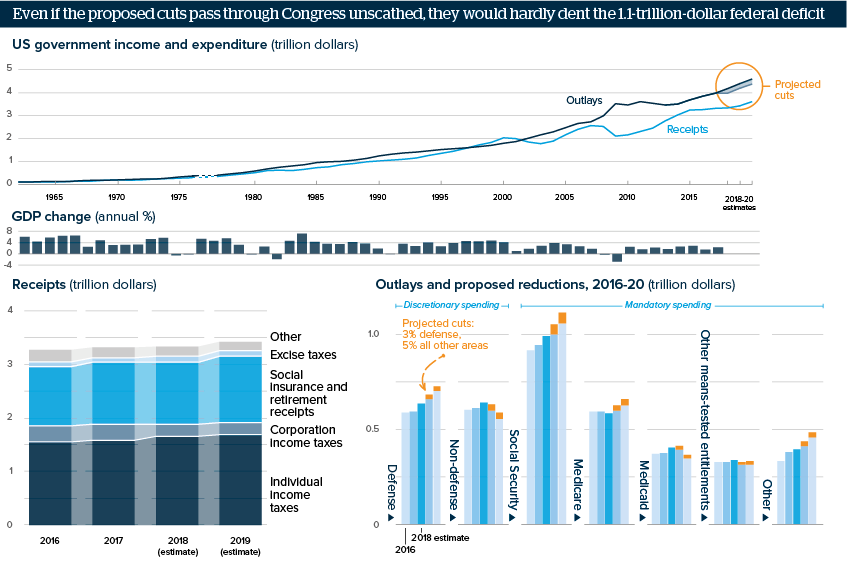US spending cut push could come with political costs
President Donald Trump is moving to tackle the rising federal deficit, but this will not be risk-free
Source: US government data; World Bank, Oxford Analytica
Outlook
Meeting his cabinet on October 17, President Donald Trump instructed the secretaries to shave 5% off their departments’ expenditure, including curtailing wasteful spending -- although the defence department faces a 2.5-3.0% cut (Trump is increasing US military capacity).
Trump’s administration is in the early stages of preparing the 2020 fiscal year budget recommendation the president will send to Congress -- an opportunity to tackle the rising federal spending deficit. Yet Trump also seeks these cuts with an eye towards presenting Republicans as overseeing the economy and national finances effectively, and towards his own re-election in 2020.
Impacts
- The Republicans’ planned second tax cut would increase the federal deficit further, absent continued economic growth maintaining tax income.
- Spending cuts would probably fall on entitlement programmes and could also occur via public project deferments, such as infrastructure.
- If Democrats win all or part of Congress in 2018, 2020 or 2022, they would push back on Republican spending cuts, or demand concessions.
- US growth, which was 4.2% in the second quarter, will likely slow; foreign trade conflicts could worsen this (and lose votes).
See also
- Further US prison reforms could come - Jan 25, 2019
- US military spending to be bargaining focal point - Dec 10, 2018
- US House Democrats eye ambitious agenda from January - Nov 27, 2018
- Prospects for US foreign policy in 2019 - Nov 22, 2018
- Both main US parties lost and won overnight - Nov 7, 2018
- Democratic ‘blue wave’ would upset US foreign policy - Nov 2, 2018
- US bipartisan infrastructure cooperation delay likely - Oct 18, 2018
- More graphic analysis
